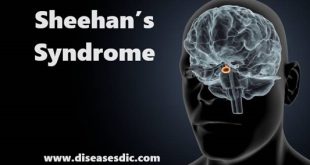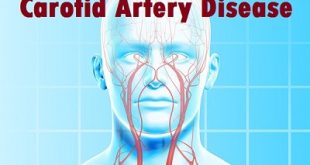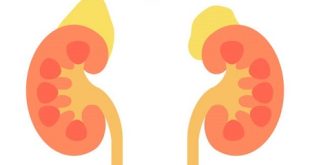Definition
Cushing’s syndrome is a debilitating endocrine disorder characterized by excessive cortisol levels in the blood which may be the result of a tumor of the pituitary gland, adrenal glands (located above the kidneys) or from tumors or cancer arising elsewhere in the body (ectopic ACTH producing tumors). Cushings disease also refers to excessive ACTH secretion by a pituitary tumor (also called pituitary adenoma). Below figure describes the feedback system of cortisol.
The HPA (hypothalamic-pituitary-adrenal axis)
Background of cushing’s syndrome
In 1932 American neurosurgeon Harvey Cushing described the clinical findings that provided the link between specific physical characteristics (e.g., abnormal obesity of the face and trunk) and a specific type of pituitary tumour. This pituitary disorder became known as Cushing syndrome. However, it later became clear that many patients with similar symptoms and signs did not have a pituitary tumour.
Thus, the term Cushing syndrome has been modified to refer to all patients with the classic symptoms and signs of the condition, regardless of the cause, while the term Cushing disease is restricted to patients in whom the symptoms and signs are caused by an adrenocorticotropic hormone- (ACTH-) secreting pituitary tumour. Among patients with spontaneously occurring Cushing syndrome, about 70 percent have Cushing disease.
Epidemiology in worldwide
Cushing’s syndrome is relatively uncommon. Older European literature reports an incidence of 2-3 cases per million per year. However, newer studies of high-risk groups report a significantly greater prevalence. Hypercortisolism has been reported in 0.5% to 1% of patients with hypertension, 2% to 3% of patients with uncontrolled diabetes, 6% to 9% of patients with adrenal masses, and 11% of patients with osteoporosis and vertebral fractures. It is unclear if this increase in prevalence is due to higher-sensitivity testing, a greater recognition of disease in high-risk groups, or variability in the diagnostic criteria between historical and more-recent studies.
Cushing’s syndrome due to adrenal disease occurs 4 times more commonly in women than in men, and Cushing’s disease (ACTH-secreting pituitary tumour) has a 3.5 to 1 female-to-male predominance. No ethnic disparities in prevalence have been identified. The majority of adults are diagnosed between the ages of 20 and 50, although it can occur at any age.
Causes of cushing’s syndrome
Adrenal glands produce cortisol, which helps in number of body’s functions, including:
- Regulating blood pressure and the cardiovascular system
- Reducing the immune system’s inflammatory response
- Converting carbohydrates, fats, and proteins into energy
- Balancing the effects of insulin
- Responding to stress
High levels of cortisol is produced due to the following reasons:
- High stress levels, including stress related to an acute illness, surgery, injury, or pregnancy, especially in the final trimester
- Athletic training
- Malnutrition
- Alcoholism
- Depression, panic disorders, or high levels of emotional stress
The most common cause of Cushing’s syndrome is the use of corticosteroid medications, such as prednisone, in high doses for a long period. Familial Cushing’s syndrome is another possible cause.
Other causes include:
- a pituitary gland tumor in which the pituitary gland releases too much adrenocorticotropic hormone, which is also known as Cushing’s disease
- ectopic ACTH syndrome, which causes tumors that usually occur in the lung, pancreas, thyroid, or thymus gland
- an adrenal gland abnormality or tumor
Symptoms of cushing’s syndrome
Common signs and symptoms involve progressive obesity and skin changes, such as:
- Weight gain and fatty tissue deposits, particularly around the midsection and upper back, in the face (moon face), and between the shoulders (buffalo hump)
- Pink or purple stretch marks (striae) on the skin of the abdomen, thighs, breasts and arms
- Thinning, fragile skin that bruises easily
- Slow healing of cuts, insect bites and infections
- Acne
Symptoms of Cushing syndrome
Women with Cushing syndrome may experience:
- Thicker or more visible body and facial hair (hirsutism)
- Irregular or absent menstrual periods
Men with Cushing syndrome may experience:
- Decreased libido
- Decreased fertility
- Erectile dysfunction
Other signs and symptoms include:
- Severe fatigue
- Muscle weakness
- Depression, anxiety and irritability
- Loss of emotional control
- Cognitive difficulties
- New or worsened high blood pressure
- Headache
- Bone loss, leading to fractures over time
- In children, impaired growth
Complications of cushing’s syndrome
Without treatment, complications of Cushing syndrome may include:
- Bone loss (osteoporosis), which can result in unusual bone fractures, such as rib fractures and fractures of the bones in the feet
- High blood pressure (hypertension)
- Type 2 diabetes
- Frequent or unusual infections
- Loss of muscle mass and strength
Diagnosis
- Urine and blood tests. These tests measure hormone levels in your urine and blood and show whether your body is producing excessive cortisol. For the urine test, you may be asked to collect your urine over a 24-hour period.
- Saliva test. Cortisol levels normally rise and fall throughout the day. In people without Cushing syndrome, levels of cortisol drop significantly in the evening. By analyzing cortisol levels from a small sample of saliva collected late at night, doctors can see if cortisol levels are too high, suggesting a diagnosis of Cushing syndrome.
- Imaging tests. CT-Scan and MRI scans can provide images of your pituitary and adrenal glands to detect abnormalities, such as tumors.
- Petrosal sinus sampling. This test can help determine whether the cause of endogenous Cushing syndrome is rooted in the pituitary or somewhere else. For the test, blood samples are taken from the petrosal sinuses – veins that drain the pituitary glands.
Treating Cushing’s syndrome
- The main treatment for iatrogenic Cushing’s syndrome is to decrease or withdraw the use of corticosteroids. However, this must be done gradually to avoid any unpleasant side effects.
- Surgery to remove the tumour is usually recommended. If surgery is unsuccessful or it’s not possible to remove the tumour safely, medication can be used to counter the effects of the high cortisol levels.
- Radio-therapy. For patients whose Cushing’s disease is not controlled with surgery, both conventional (external beam) and stereotactic radiosurgery are effective in controlling cortisol levels and tumor growth in many patients. However, the lowering of cortisol levels generally takes significantly longer with external beam radiotherapy compared to stereotactic radiotherapy. Neurologic complications such as visual loss, weakness, and memory impairment have rarely been reported with both external beam and stereotactic radiotherapy.
- Medications which can be used to help control cortisol levels. Most typically, these include “adrenal-directed” medications: ketoconazole, aminoglutethemide, and metyrapone. These agents all inhibit steroid (cortisol) production in the adrenal glands. All are relatively effective but all have some side effects.
Prevention of cushing’s syndrome
- Eating a balanced diet
- Getting regular check-ups
- Monitoring mental health
- Soothe aches and pains
- Exercise your brain
 Diseases Treatments Dictionary This is complete solution to read all diseases treatments Which covers Prevention, Causes, Symptoms, Medical Terms, Drugs, Prescription, Natural Remedies with cures and Treatments. Most of the common diseases were listed in names, split with categories.
Diseases Treatments Dictionary This is complete solution to read all diseases treatments Which covers Prevention, Causes, Symptoms, Medical Terms, Drugs, Prescription, Natural Remedies with cures and Treatments. Most of the common diseases were listed in names, split with categories.








Hello.This post was really fascinating, particularly since I was looking for thoughts on this issue last Wednesday.
Nice blog right here! Also your website a lot up fast! What host are you using? Can I get your associate hyperlink for your host? I wish my website loaded up as fast as yours lol
Someone necessarily lend a hand to make severely articles I’d state. This is the very first time I frequented your website page and so far? I amazed with the research you made to make this particular submit extraordinary. Wonderful activity!
WhatHappening i am new to this, I stumbled upon this I’ve found It absolutely helpful and it has aided me out loads. I hope to contribute & help other users like its aided me. Good job.
I like what you guys are up too. Such intelligent work and reporting! Keep up the excellent works guys I incorporated you guys to my blogroll. I think it will improve the value of my web site 🙂
Thank you for the good writeup. It in truth used to be a amusement account it. Glance advanced to more delivered agreeable from you! By the way, how could we keep up a correspondence?
Fantastic beat ! I wish to apprentice even as you amend your website, how can i subscribe for a blog website? The account aided me a appropriate deal. I had been tiny bit acquainted of this your broadcast provided bright transparent idea
Good day! Do you use Twitter? I’d like to follow you if that would be ok. I’m absolutely enjoying your blog and look forward to new posts.
I’m commenting to let you understand of the useful experience my wife’s girl obtained visiting your blog. She discovered so many things, most notably what it is like to possess a great teaching style to get many people with no trouble learn about a number of complex subject matter. You actually surpassed readers’ expected results. I appreciate you for showing these interesting, safe, educational and easy guidance on the topic to Lizeth.